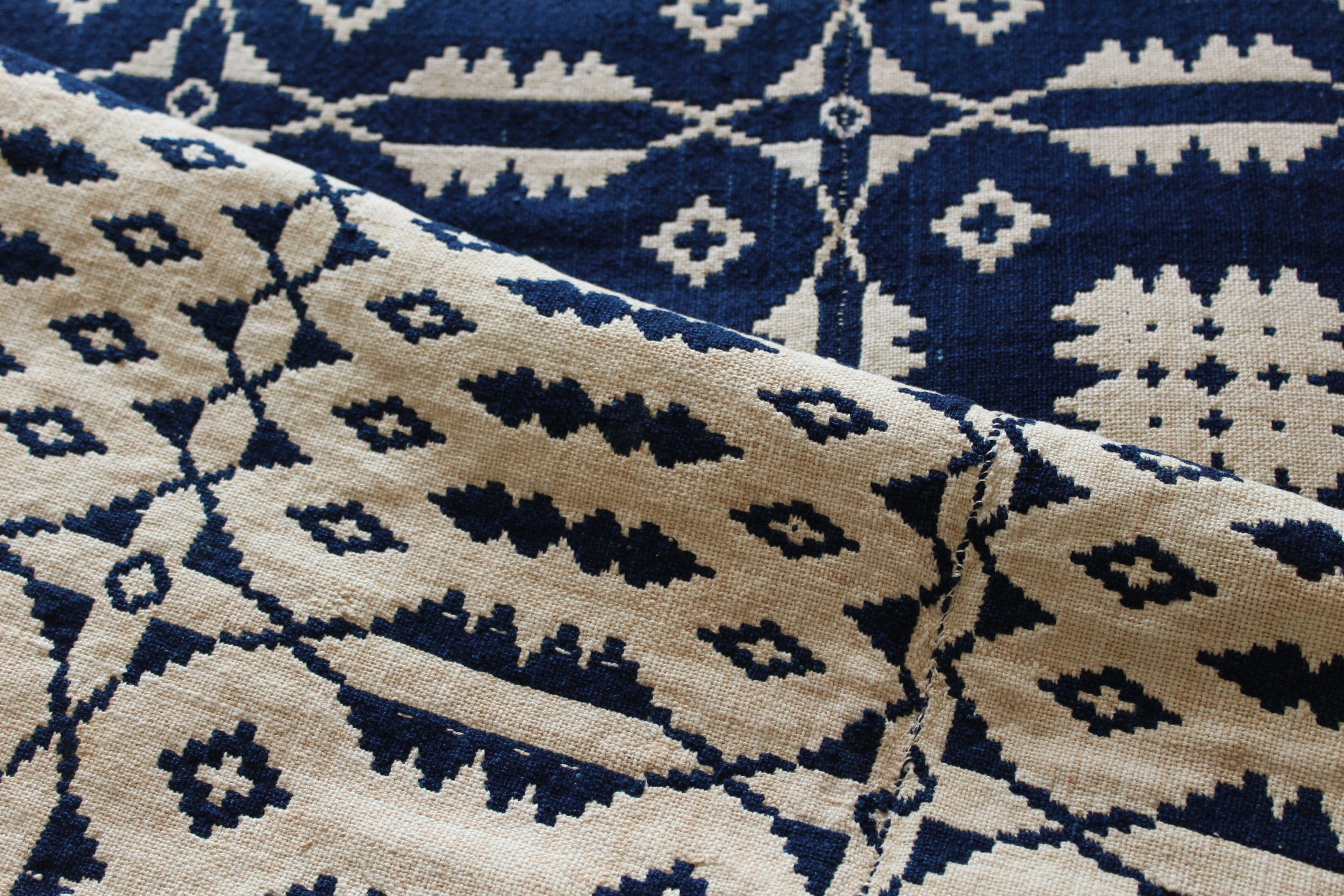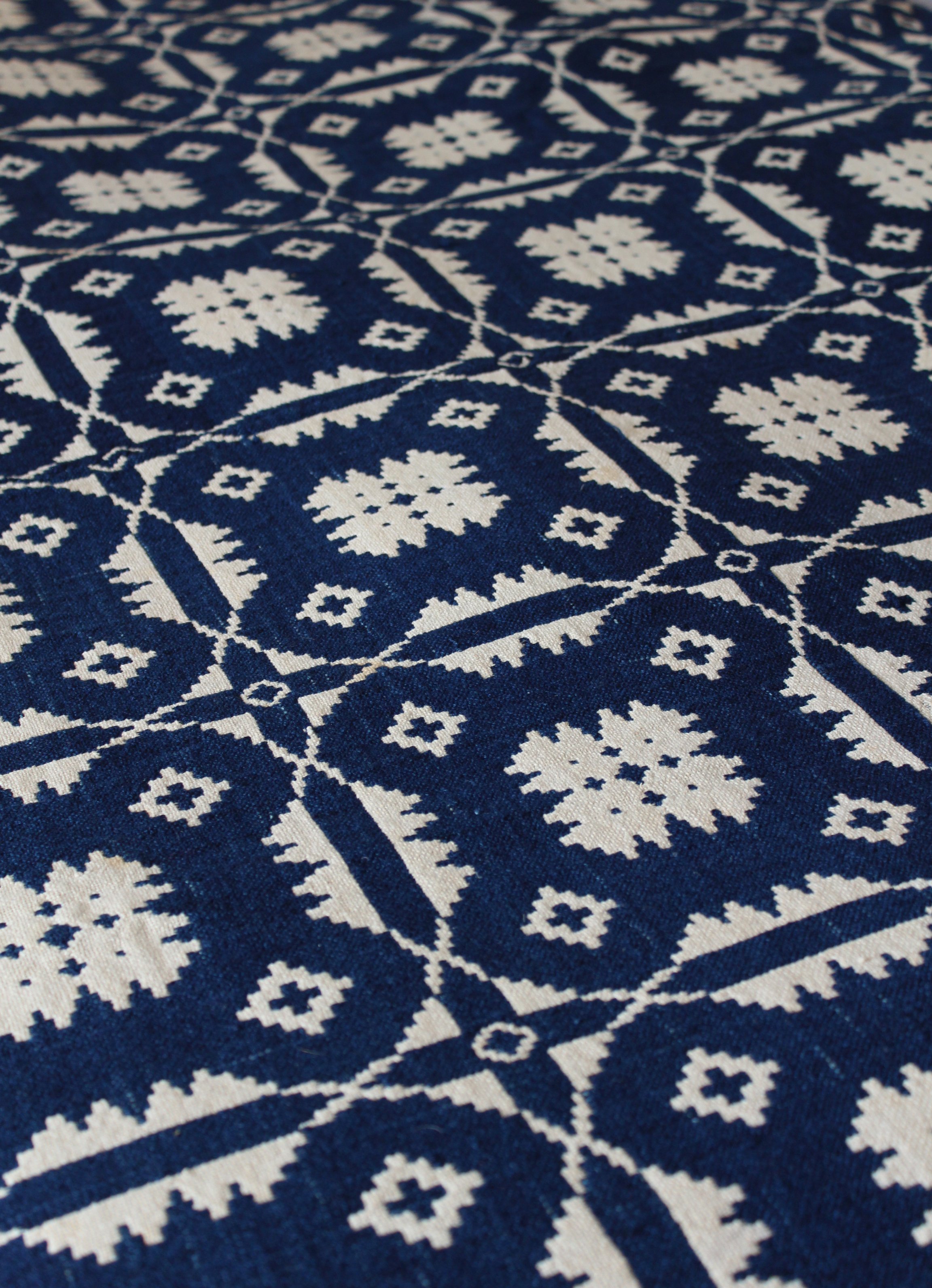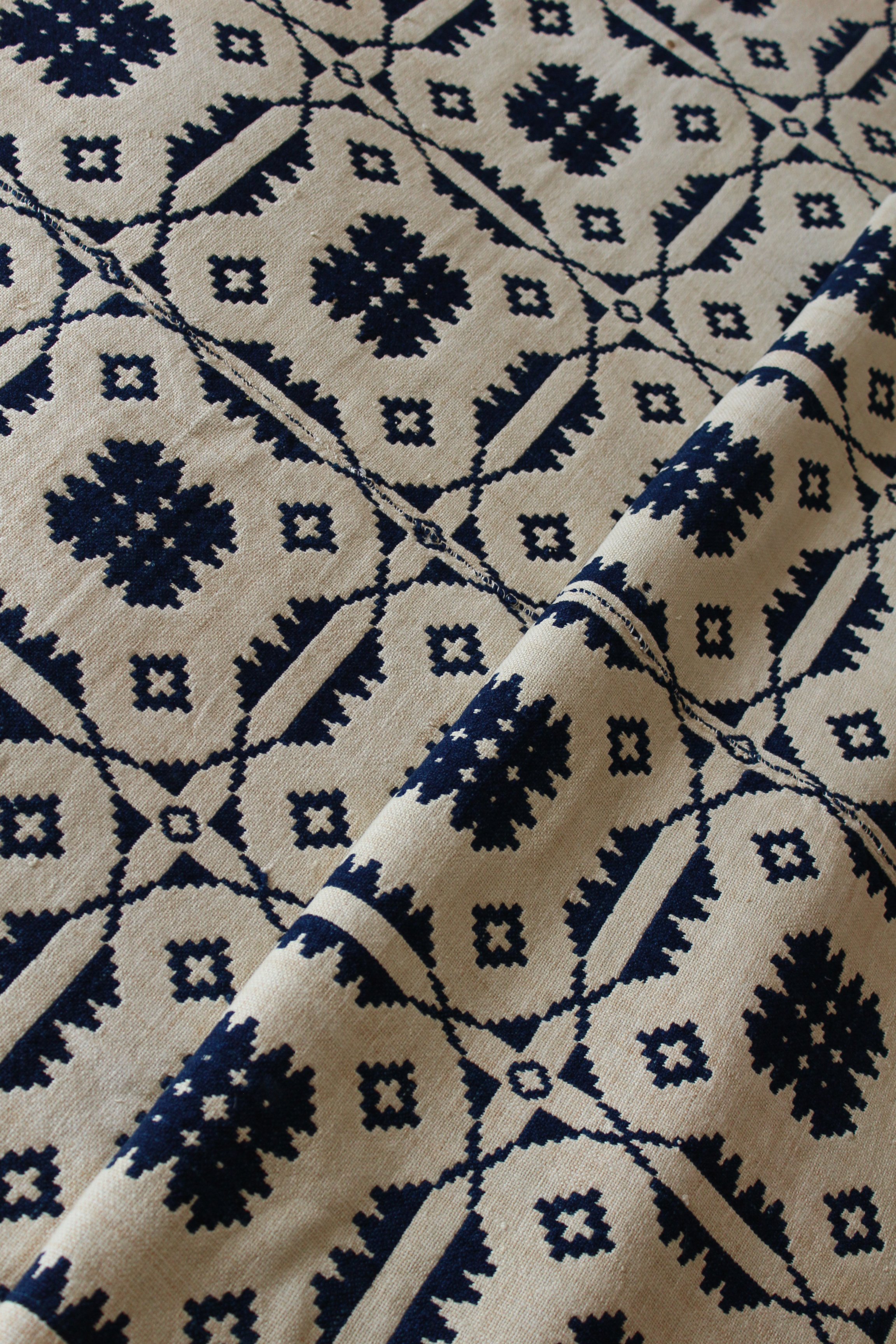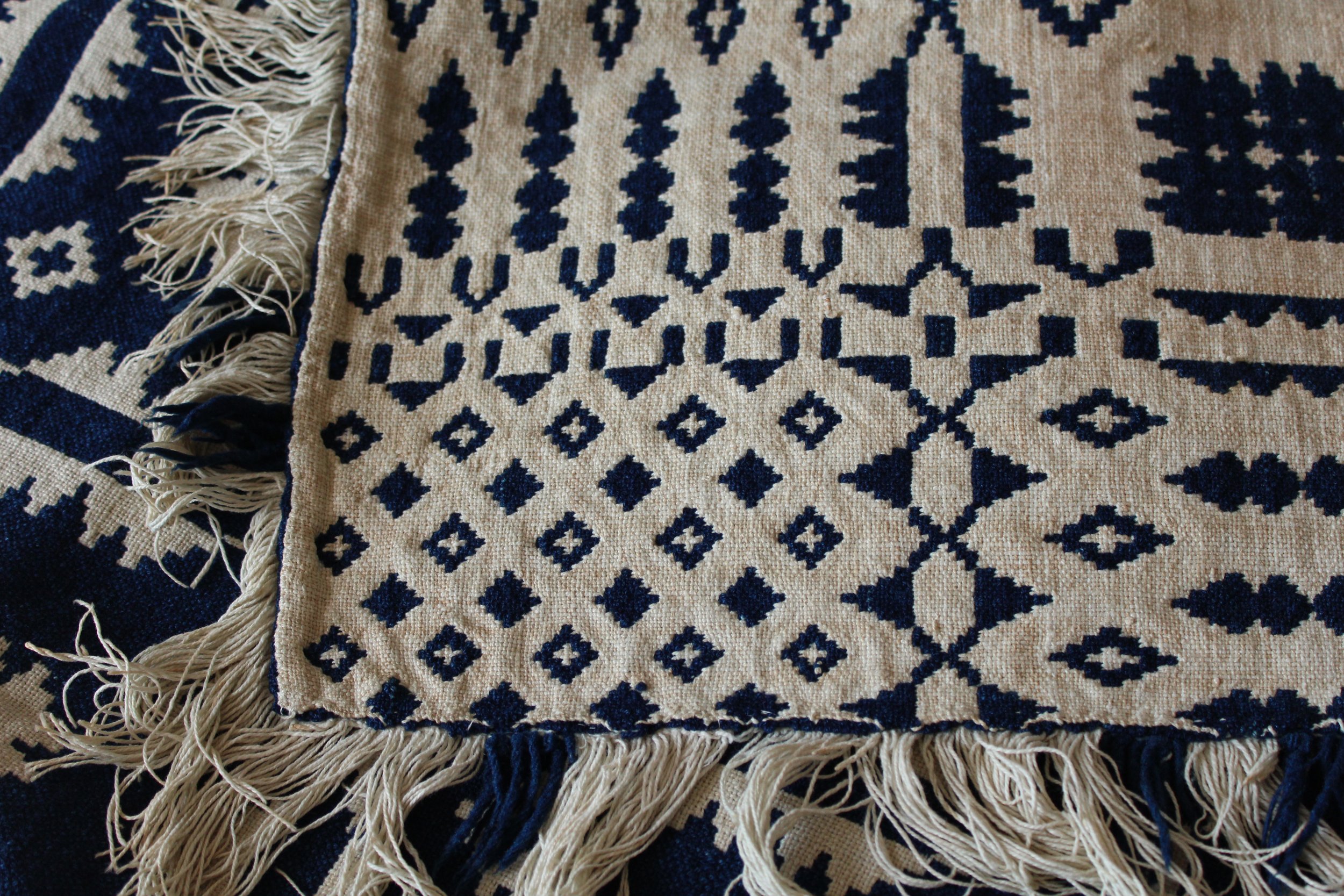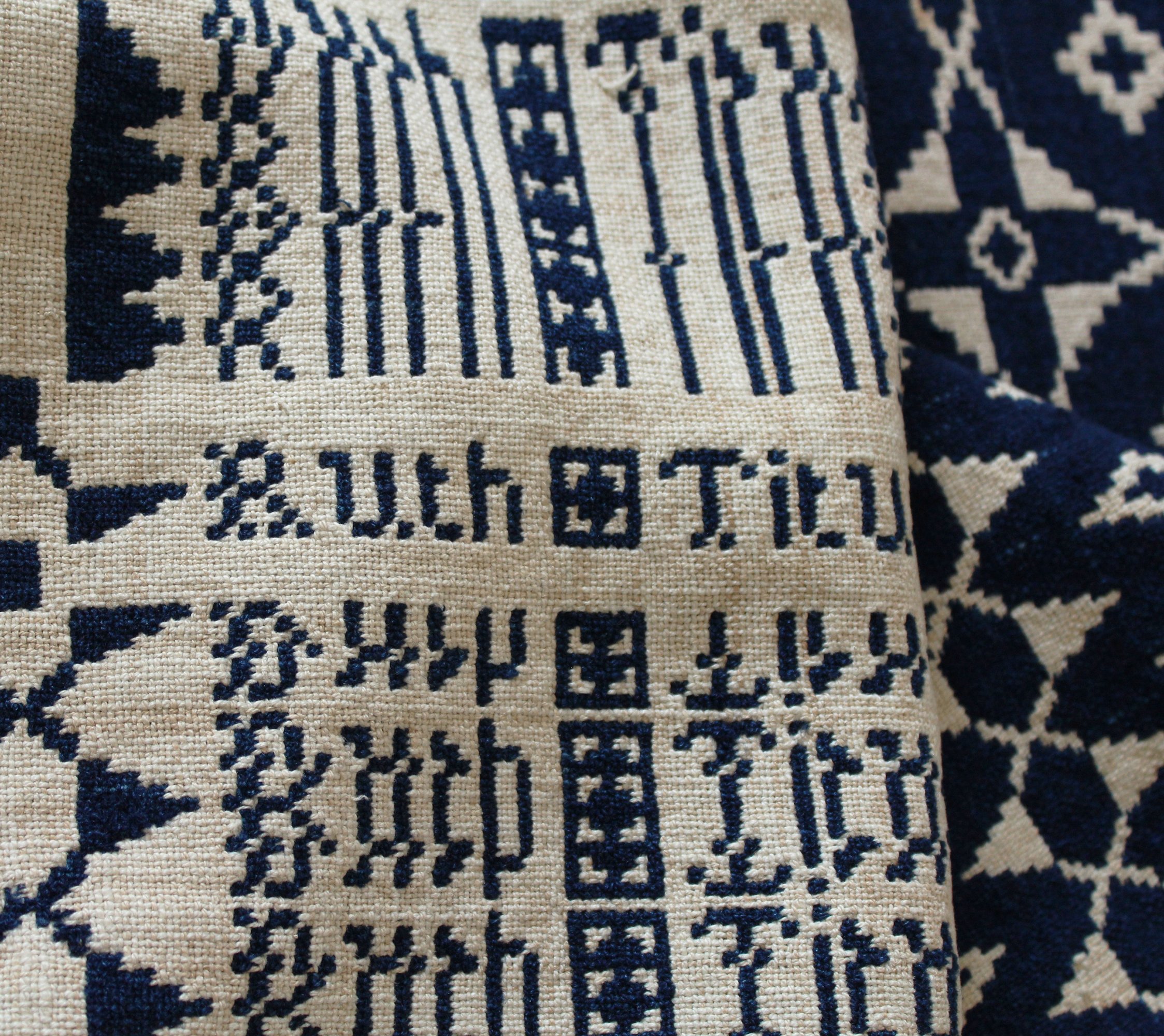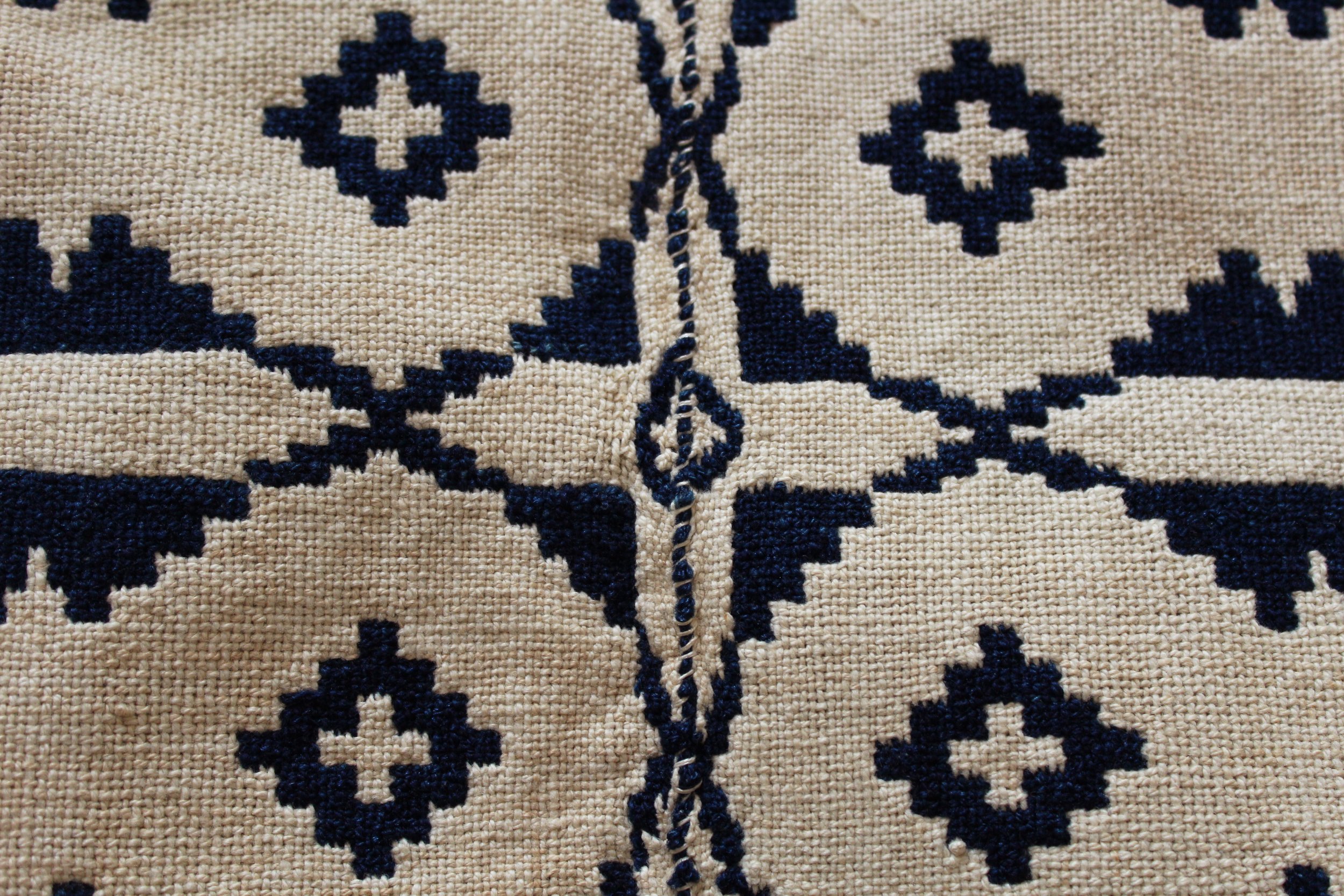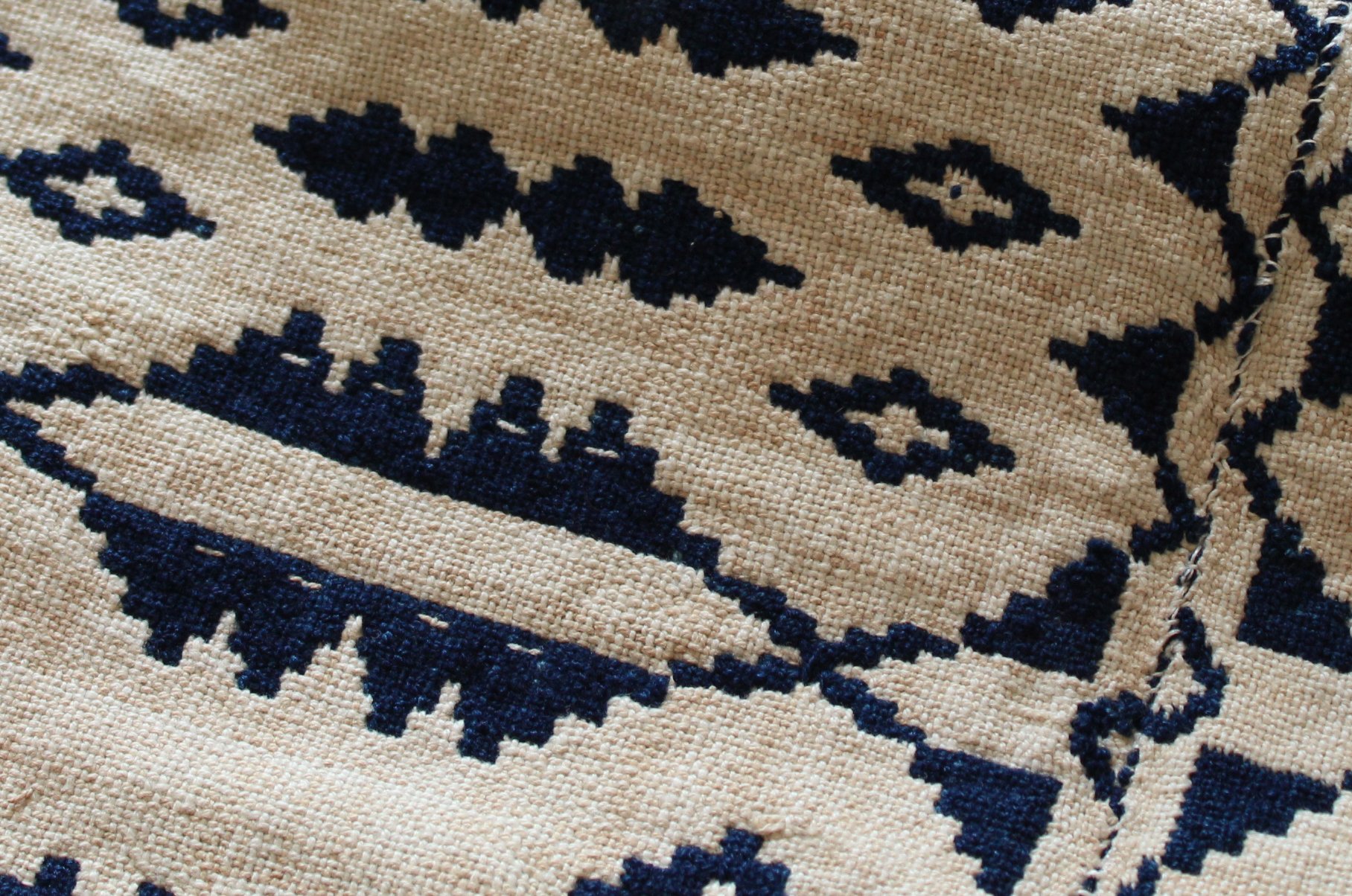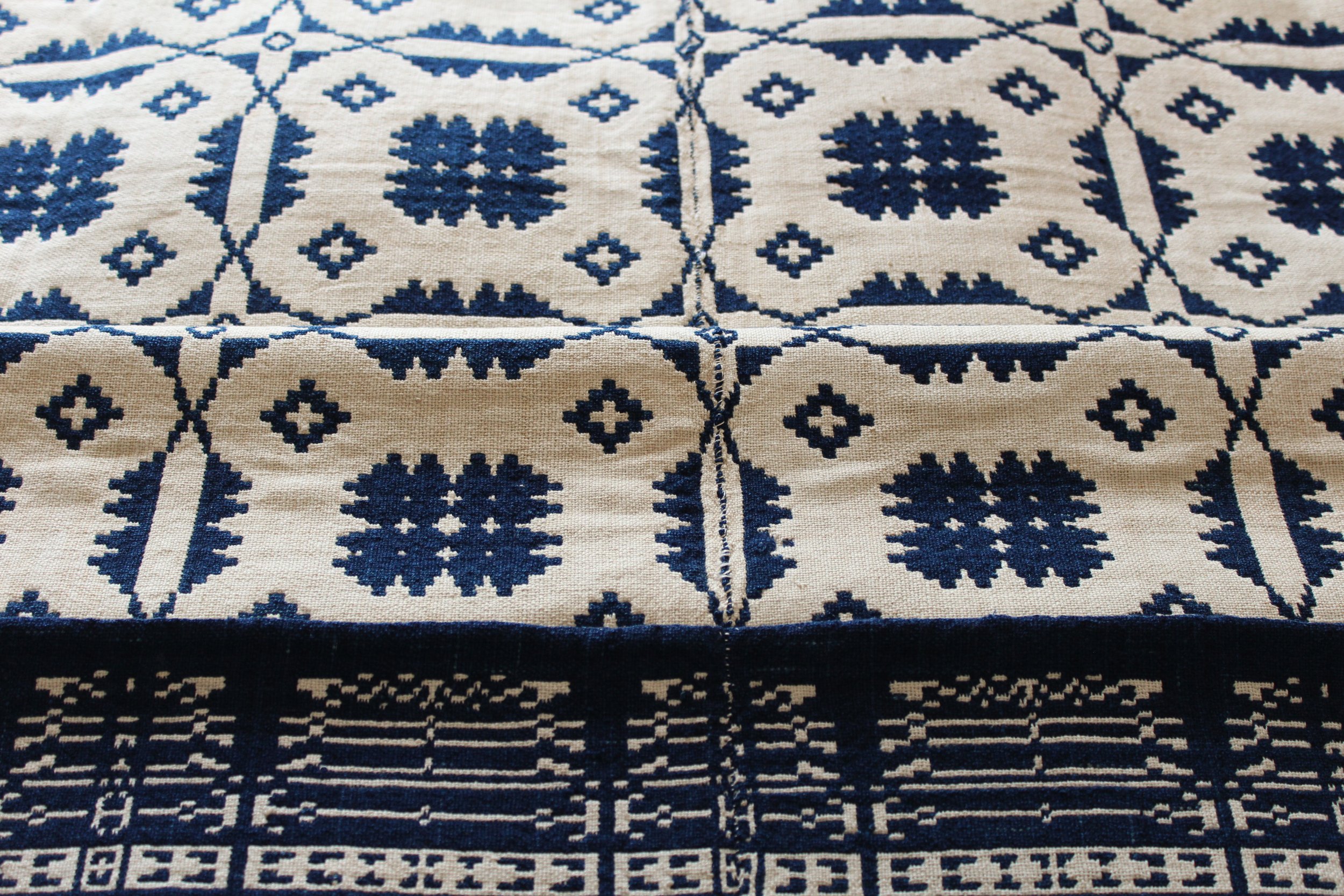The Ruth Titus Blanket
I inherited a very precious family heirloom from my mother a few years ago - an American coverlet, woven with an intricate double-cloth pattern in unbleached white and deep indigo blue.
The piece was woven for my American Great Great Great Great Great Grandmother Ruth Titus in the early Nineteenth century. My maternal family has been a trans-Atlantic one for many many generations, with folk and objects criss-crossing the Atlantic frequently. The coverlet hung for many years in the stairwell of my parents’ home in Worcestershire. It came to my mother from an American cousin of her mother’s/ my grandmother’s - and was for many years in the family farmhouse on the north fork of Long Island.
The piece is known in the family as the Titus blanket, but in the historical textile world the genre is known as a ‘coverlet’. There are a number of similar pieces in the Art Institute of Chicago, as well as a large and varied collection of coverlets in the National Museum of American History (Smithsonian).
I owe enormous thanks to textile historian Clare Browne for all her help and expertise in uncovering something of its provenance. Likewise to my mother’s cousin Michael for all his help with our family history.
The coverlet is woven in two different fibres. The white is a soft unbleached cotton - a little marked and mottled over the centuries. The blue is an indigo-dyed wool. Despite the many decades of use, the colour is strong and vivid, with all the wonderful deep lively indigo variations.
The fringe has been added onto the edges after the blanket was completed - but you can see the two different fibres quite clearly. The indigo blue woollen strands are quite felted, while the cotton ones lie as separate strands.
The blanket was probably woven by a professional - and almost certainly male - weaver for my forebear Ruth Titus. It is a bespoke piece, and bears her name, woven into the double-cloth pattern along the borders of the blanket. The letters are distorted and elongated as the pattern changes, but the name appears clear and legible in perfect proportion at one point on either face of the blanket.
Ruth Titus (née Norton) (1781 - 1832) lived in North Salem, Westchester County, NY and is buried in the nearby Ivandell cemetery in Somers. Several of Ruth Titus’s descendants continued to live in Somers, and the blanket likely stayed there until it came to Long Island.
The pattern on the coverlet is familiar in style - the look is reminiscent to me of the intricate double-cloth Welsh tapestry blankets, but the technique also appears in many different northern European textile traditions. Reversible double-cloths such as these were often woven on multiple shaft dobby looms with clever block threading combinations, employing several 4-shaft blocks of different widths and arrangements.
The addition of the border detail with the lettering however suggests that the blanket was in fact woven on an early jacquard loom. Certainly the lettering seems much too complex for a dobby loom.
Jacquard looms - patented by Frenchman Joseph Marie Jacquard in 1804 - were operated with a system of punch-cards, and represented a huge technological leap in weave production allowing for much more complex designs. The new technology was introduced into North America by William Horstmann of Philadelphia in 1823. Professional weavers were quick to recognize the scope of the new technology, and existing looms were often converted to ‘half’ mechanized ones with a ‘Jacquard’ attachment (see Coverlets : A Handbook on the Collection of Woven Coverlets in the Art Institute of Chicago by Mildred Davison and Christa C. Mayer-Thurman, 1973). In her 1977 study of similar woven coverlets in Canada, textile historian Dorothy Burnham notes that “… with training and the purchase of some essential parts the early professional weaver could make much of his own mounture and set up in the specialised production of ‘fancy’ coverlets…”
It is only amateur conjecture on my part, but the combination of the familiar dobby-woven double-cloth style patterns with the addition of a personalized name suggests to me that the weaver of Ruth Titus’s coverlet was just starting to explore the design possibilities of the new technology and its associated commercial applications. It must have seemed a great novelty and a compelling sales-pitch to offer clients the service of having their name woven into the very fabric of their coverlet.
Ruth Titus died in 1832 - so I can, with some confidence, date the coverlet to the nine years between William Horstmann’s introduction of the technology in 1823 and her death in 1832. This would make it fast approaching its second centenary.
The coverlet is woven in two lengths, and joined down the centre - each side a mirror of the other. The central seam is quite roughly hand-stitched with a simple binding stitch in the white cotton (see above left). The pattern matches at some points, but such is the fluid nature of fabric that at others it is quite out of alignment.
Looking closely at the weave there are quite a few little weave-flaws in the work - missed picks such as the little dashes of white you see in the image above right. As a weaver these jump out to me, but I find that they only add to charm of the piece. Weave flaws such as these sometimes occur on the reverse face of the fabric, and are only spotted after the cloth is cut off the beam. They can be mended by hand, but it is a slow and painstaking process. I imagine that a price was agreed for the finished piece and the weaver was probably reluctant to invest a great deal of un-budgeted time into the process. Perhaps he didn’t spot the flaws himself, or perhaps he gambled that his client wouldn’t notice.
Over the many decades the coverlet has gained the scars of time bringing and the wear and tear of daily use. In the image above you can see a darn in the white cotton. I can’t possibly know which of my forebears mended it, but I love to think of all the hands that have touched it and all the bodies that have slept under it.
It is a very precious heirloom, steeped in both family and weave history, and I feel extremely honoured that it has come into my care.
With great thanks to Clare Browne for all her invaluable insight.

